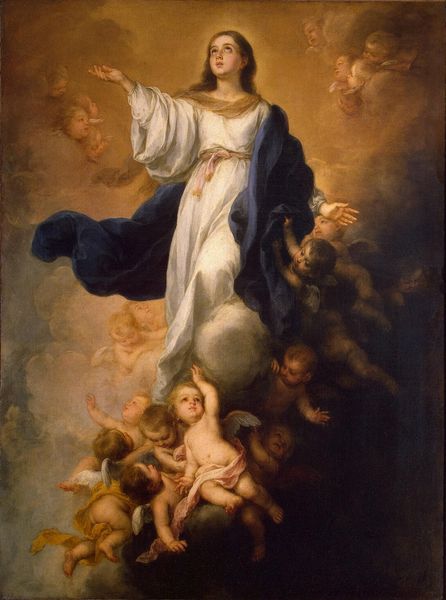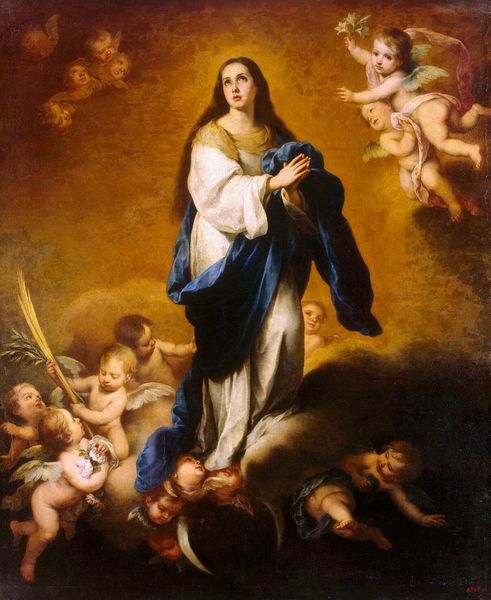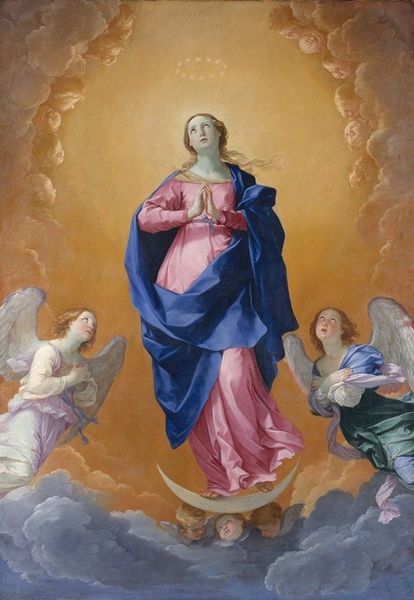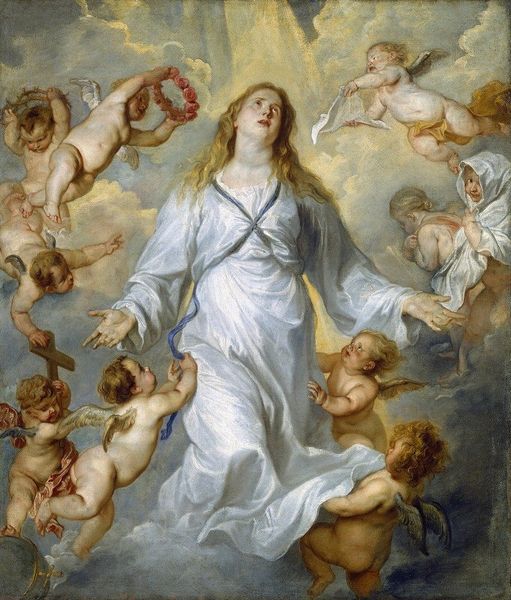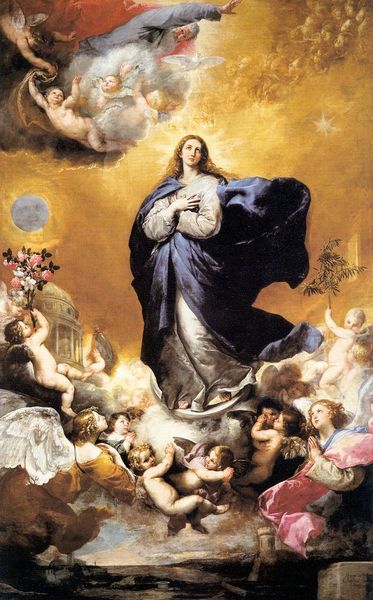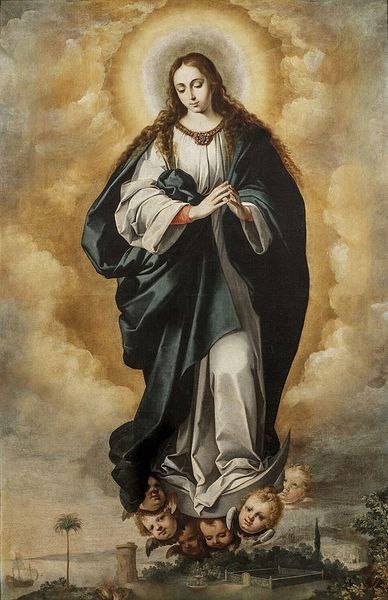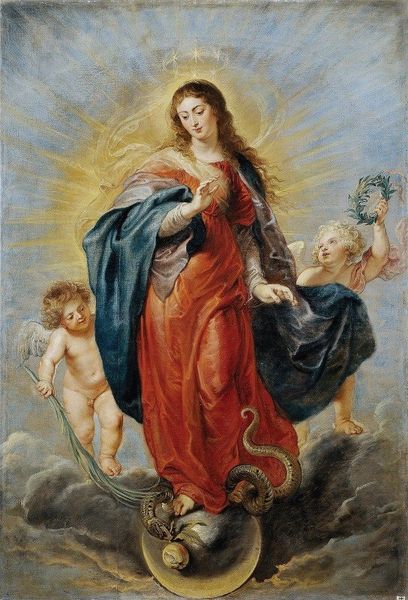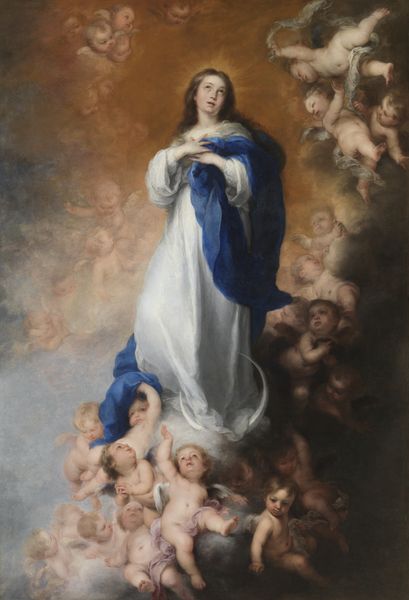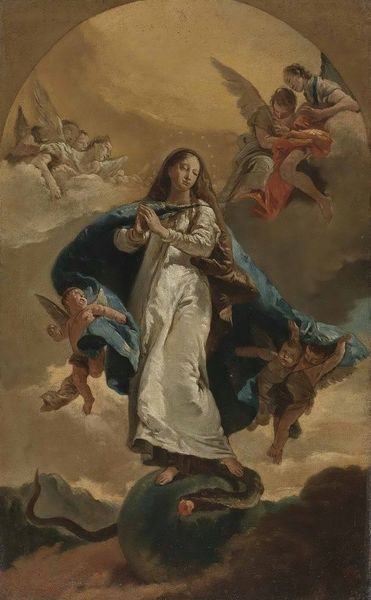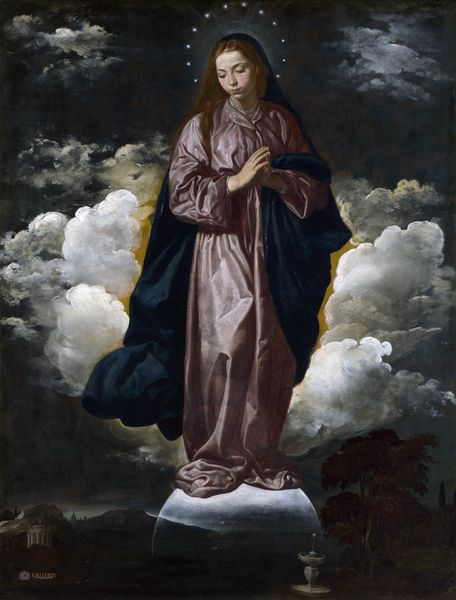
painting, oil-paint
#
portrait
#
allegory
#
baroque
#
painting
#
oil-paint
#
figuration
#
oil painting
#
history-painting
#
portrait art
Copyright: Public Domain: Artvee
Curator: Standing before us is "The Immaculate Conception" by Bartolomé Estebán Murillo, believed to have been completed around 1680. Painted with oil on canvas, it presents a vision of ethereal beauty and spiritual grace. Editor: My initial impression is just… wow, radiant. The upward sweep of her figure and the swirling clouds give such a strong feeling of ascension. There’s also this fascinating contrast between her serene face and the energetic cherubs. Curator: Exactly! Murillo masterfully uses Baroque techniques. Note how the swirling drapery and dynamic composition enhance the sense of movement, drawing our eyes upward towards her beatific expression. What strikes me is the luminosity, the way the light catches the folds of her robe, which is so beautifully done. Editor: Indeed, but observe, too, the symbolic framework – the delicate rendering of the cherubs, their soft, rounded forms set against the Virgin's composed, almost severe elegance. The lily and the palm, emblematic of purity and triumph, enhance her iconographic power, I believe. Curator: Oh, it's utterly dreamlike, a scene straight out of a vision. I can almost feel the divine presence he was trying to capture, a vision brimming with tenderness and devotion. Do you notice how the angels’ plump little faces almost have a touch of mischievousness to them? As though divinity is also playful. Editor: It also presents a meticulously designed representation of innocence. It isn't a simple matter of devotion but of the artistic negotiation between earthly beauty and spiritual ideal that I am drawn to. Each cherub and cloud is more than simple ornamentation. They build an ordered yet sublime symbolic structure around the central figure of Mary. Curator: I see it as almost more human, and immediate—that hint of playfulness prevents it from being coldly academic or distant. To me it shows there's a real affection on Murillo’s part. Editor: Perhaps, yet I see that “affection” structured to serve an iconic, representational, allegorical function within this composition. So, on one level a piece of exquisite craftsmanship, and on another, an example of applied theological principle. Curator: In viewing Murillo’s “Immaculate Conception”, one senses an embrace of a tender vision—one filled with radiant awe and perhaps, with that bit of delight from cherubic glee! Editor: For me, “The Immaculate Conception” stands as a testament to a deeply constructed system of meaning, where divinity itself is formalized by both the beauty and visual order, crafted and divinely inspired.
Comments
No comments
Be the first to comment and join the conversation on the ultimate creative platform.
